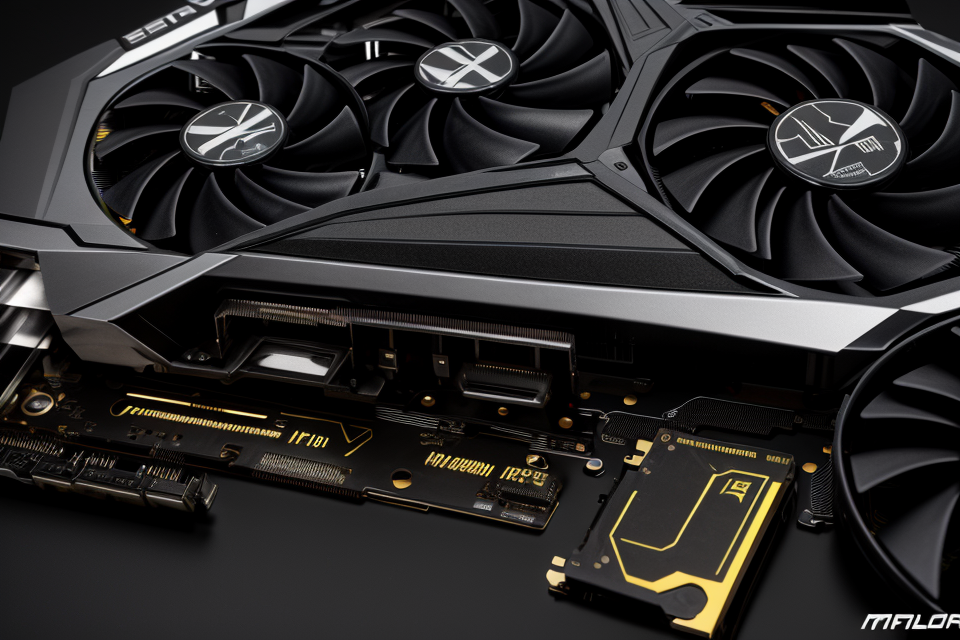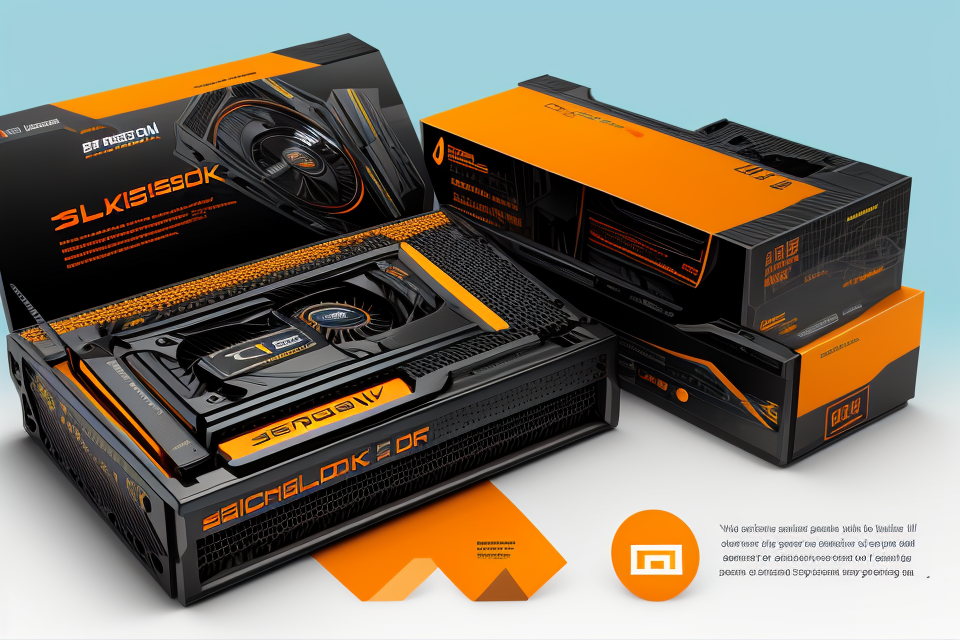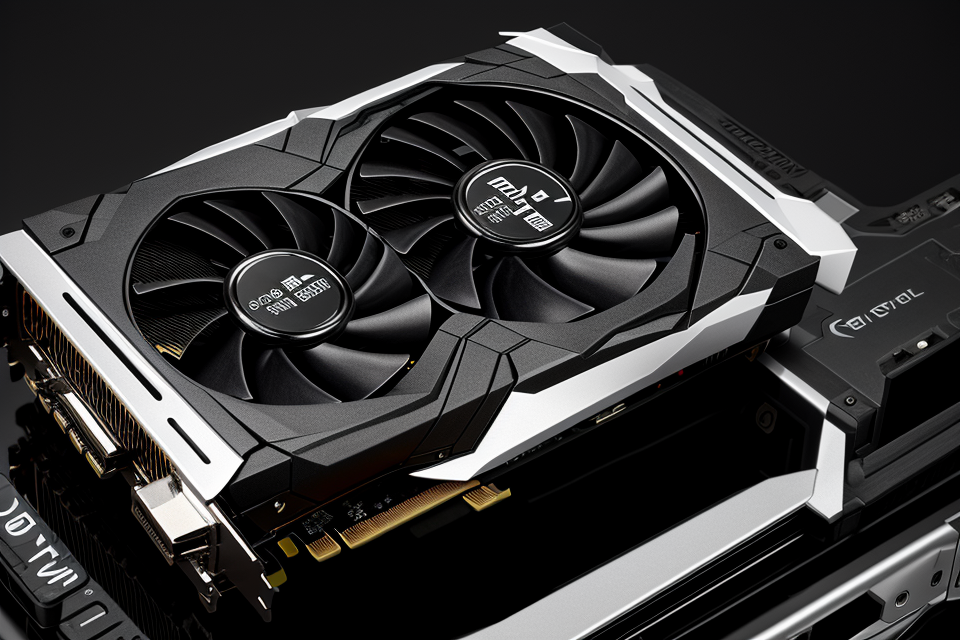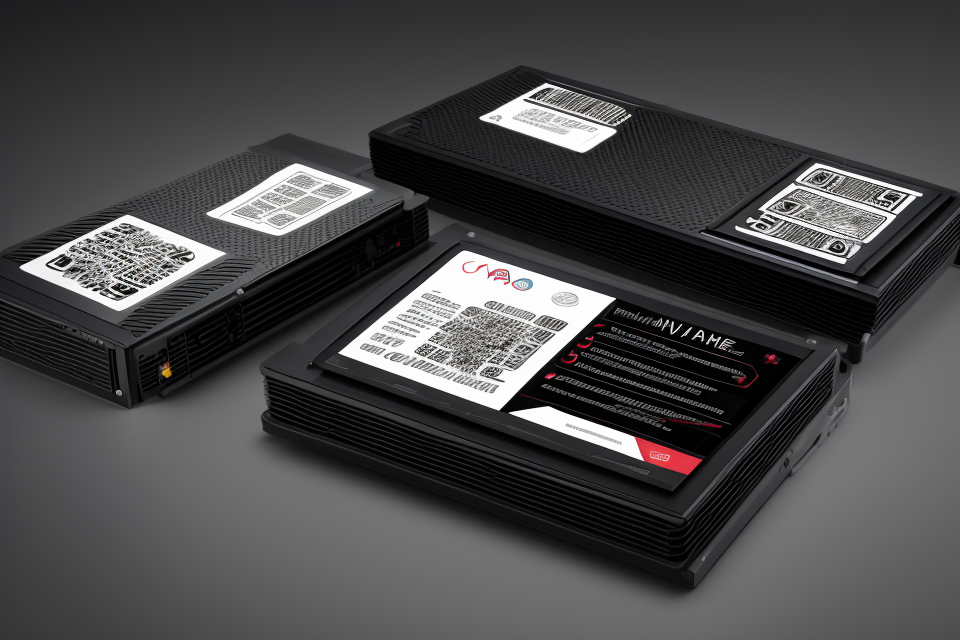
Are you curious about the features of your graphics card? Want to know if it’s up to par with the latest technology? Then you’ve come to the right place! In this comprehensive guide, we’ll show you how to check your graphics card features and see if it’s time for an upgrade.
We’ll start by discussing the importance of having a good graphics card and what it can do for your gaming and visual experience. Then, we’ll take you through the steps of checking your graphics card features, from downloading the necessary software to interpreting the results.
Whether you’re a seasoned gamer or just starting out, this guide has something for everyone. So let’s get started and see what your graphics card is capable of!
Understanding Graphics Card Features
What are graphics card features?
Graphics card features refer to the specifications and capabilities of a graphics processing unit (GPU) in a computer. These features determine the performance and functionality of the GPU, including its ability to render images, handle complex computations, and support various technologies such as virtual reality (VR) and augmented reality (AR).
Some of the key graphics card features include:
- Clock speed: The speed at which the GPU can process data, measured in megahertz (MHz).
- Memory: The amount of memory available on the GPU, measured in bits and bytes.
- Texture units: The number of texture units on the GPU, which determine its ability to handle textures in 3D graphics.
- Shader units: The number of shader units on the GPU, which determine its ability to handle complex calculations in 3D graphics.
- Supported technologies: The technologies that the GPU supports, such as VR, AR, and DirectX or OpenGL.
It is important to check the graphics card features of a computer before using it for tasks such as gaming, video editing, or 3D modeling, as the performance of these tasks depends heavily on the capabilities of the GPU. By understanding the graphics card features, users can make informed decisions about the types of tasks they can perform on their computer and ensure that they are getting the most out of their hardware investment.
Types of graphics card features
Graphics card features are essential components that affect the performance and capabilities of a graphics card. These features determine the quality and speed of graphics rendering, display output, and overall system performance. In this section, we will discuss the different types of graphics card features.
- GPU Architecture: The GPU architecture refers to the design and structure of the graphics processing unit (GPU) within the graphics card. It determines the number of processing cores, memory bandwidth, and other factors that affect the card’s performance. The two main GPU architectures are NVIDIA’s CUDA and AMD’s Radeon.
- CUDA Cores: CUDA cores are the processing cores within the GPU that perform parallel computations. The number of CUDA cores directly affects the card’s performance and ability to handle complex graphics tasks. A higher number of CUDA cores means better performance for tasks such as gaming, video editing, and 3D rendering.
- Memory Capacity: Memory capacity refers to the amount of memory (VRAM) available on the graphics card. It determines the card’s ability to handle large and complex graphics datasets. The more VRAM a card has, the more memory-intensive tasks it can handle without running out of memory. This is especially important for tasks such as gaming, video editing, and 3D rendering.
- Display Connectors: Display connectors refer to the ports on the graphics card that connect to the display device. The most common display connectors are HDMI, DVI, and DisplayPort. The number and type of display connectors on a card determine the number and type of displays it can connect to.
- Power Consumption: Power consumption refers to the amount of power required by the graphics card to operate. Higher-end graphics cards typically consume more power, which can affect the overall power consumption of the system. Power consumption is an essential factor to consider when selecting a graphics card, especially for systems with limited power supplies or those that run on laptops.
How to Check Your Graphics Card Features
Method 1: Using Device Manager
Checking your graphics card features using Device Manager is a simple and straightforward process. Follow these steps to access your graphics card information:
- Open Device Manager:
- Press the Windows key on your keyboard.
- Type “Device Manager” in the search bar and select the “Device Manager” app.
- Expand the “Display adapters” section:
- In Device Manager, you’ll see a list of devices. Locate the “Display adapters” section and expand it by clicking on the arrow next to it.
- Identify your graphics card:
- Locate your graphics card in the list of display adapters. Typically, the name of the manufacturer and the model of the graphics card are listed.
- Access graphics card features:
- Right-click on your graphics card and select “Properties” from the context menu.
- In the “Properties” window, you’ll find various tabs with information about your graphics card, such as “Overview,” “Display,” “Hardware acceleration,” and “Advanced.”
- Click on each tab to view the available features and capabilities of your graphics card.
Note: The specific information available in Device Manager may vary depending on your graphics card and operating system. However, most basic information, such as the manufacturer, model, and driver version, should be available in this method.
Screenshots of graphics card features in Device Manager may be provided to illustrate the information available, but it is essential to note that the exact appearance and information may differ based on your system configuration.
Method 2: Using GPU-Z
Step 1: Download and Install GPU-Z
- Visit the official website of GPU-Z (https://www.gpuz.com/gpuz.php) and download the latest version of the software.
- Once the download is complete, run the installer and follow the on-screen instructions to install GPU-Z on your computer.
Step 2: Check Graphics Card Features using GPU-Z
- Open the GPU-Z application on your computer.
- In the “Main” tab, you will see the details of your graphics card, including the manufacturer, model, and memory size.
- To view more detailed information about your graphics card, click on the “Sensor” tab. Here, you can view the temperature, clock speed, and other relevant information.
- To view the graphics card features, click on the “Graphics” tab. Here, you can view the GPU clock speed, memory clock speed, and other relevant information.
- You can also take screenshots of the graphics card features in GPU-Z by clicking on the “Capture” button and selecting the area of the screen you want to capture.
Screenshots of Graphics Card Features in GPU-Z
- The “Main” tab in GPU-Z displaying the basic details of the graphics card:

- The “Sensor” tab in GPU-Z displaying the temperature and clock speed of the graphics card:

- The “Graphics” tab in GPU-Z displaying the GPU clock speed and memory clock speed of the graphics card:

Method 3: Using MSI Afterburner
Steps to download and install MSI Afterburner
- Visit the official MSI website and download the latest version of MSI Afterburner.
- Once the download is complete, run the installer and follow the on-screen instructions to install the software.
- Restart your computer to ensure that the software is properly installed.
Steps to check graphics card features using MSI Afterburner
- Open MSI Afterburner.
- Click on the “Sensor” tab located at the top of the window.
- Select the “GPU-Z” option from the drop-down menu.
- The GPU-Z window will appear, displaying information about your graphics card, including its manufacturer, model, memory size, clock speed, and other relevant details.
Screenshots of graphics card features in MSI Afterburner
Screenshots of GPU-Z window displaying graphics card features can be added here.
- GPU-Z is a lightweight utility that provides detailed information about your graphics card, including its clock speed, memory size, and other relevant details.
- It is a popular tool among gamers and enthusiasts who want to monitor and optimize their graphics card performance.
- Using MSI Afterburner and GPU-Z together can provide a comprehensive overview of your graphics card’s features and performance.
Troubleshooting Graphics Card Features
Common issues with graphics card features
- Overheating
- Overheating is a common issue that can occur when a graphics card is running for an extended period or is being used to run resource-intensive applications.
- This can cause the graphics card to shut down to prevent damage, resulting in system crashes or display blackouts.
- To prevent overheating, it is essential to ensure proper ventilation for the graphics card and keep it clean of dust and debris.
- It is also recommended to monitor the temperature of the graphics card using the system’s monitoring tools and to adjust the power and fan settings as needed.
- Inadequate memory
- Inadequate memory is another common issue that can affect the performance of a graphics card.
- If the graphics card does not have enough memory to handle the demands of the application being used, it can result in slow performance, lag, or crashes.
- To prevent inadequate memory, it is essential to ensure that the graphics card has enough memory to handle the demands of the application being used.
- This can be done by upgrading the graphics card to one with more memory or by closing other applications that may be using up the available memory.
- Display connection issues
- Display connection issues can occur when the graphics card is not properly connected to the display or when the display is not compatible with the graphics card.
- This can result in display blackouts, ghosting, or other display artifacts.
- To prevent display connection issues, it is essential to ensure that the graphics card is properly connected to the display and that the display is compatible with the graphics card.
- This can be done by checking the display’s specifications and ensuring that it meets the requirements of the graphics card.
How to fix common issues with graphics card features
Proper installation of display connectors
Ensure that the display connectors are properly installed on your graphics card and computer. This is crucial to establish a stable connection between the graphics card and the monitor, and prevent any potential signal loss or interference. To check the connectors, look for any loose connections or damaged pins, and tighten or replace them as necessary.
Updating graphics card drivers
Outdated graphics card drivers can cause compatibility issues and negatively impact performance. Regularly updating your graphics card drivers can help fix common issues and optimize your system’s performance. To update your graphics card drivers, go to the manufacturer’s website and download the latest drivers for your specific graphics card model. Follow the installation instructions carefully, and restart your computer after installation.
Ensuring adequate power supply
Insufficient power supply can cause instability and damage to your graphics card, leading to issues with its features. Check the power supply unit (PSU) in your computer to ensure that it meets the minimum requirements for your graphics card. If your PSU is not powerful enough, consider upgrading to a higher wattage unit to avoid potential problems with your graphics card features. Additionally, ensure that all cables are securely connected and not damaged, as this can also affect power supply.
FAQs
1. What is a graphics card, and why is it important?
A graphics card, also known as a display adapter or video card, is a hardware component that is responsible for rendering images and videos on a computer screen. It is important because it offloads the work of rendering graphics from the CPU, allowing for smoother and more efficient performance when running graphics-intensive applications such as video editing, gaming, and 3D modeling.
2. How can I check the features of my graphics card?
There are several ways to check the features of your graphics card. One way is to use the Windows Device Manager. To do this, right-click on the Windows Start button and select “Device Manager.” Once the Device Manager opens, expand the “Display adapters” section to see a list of graphics cards installed on your computer. Right-click on the graphics card you want to check and select “Properties.” In the Properties window, go to the “Driver” tab and select “Details.” This will show you the driver version, device ID, and other information about your graphics card.
Another way to check the features of your graphics card is to use third-party software such as GPU-Z or MSI Afterburner. These programs provide more detailed information about your graphics card, including clock speeds, memory usage, and temperature.
3. What information can I expect to find about my graphics card?
When checking the features of your graphics card, you can expect to find information such as the make and model of the card, the amount of video memory (VRAM) it has, the clock speed of the GPU and memory, and the driver version. This information can be useful when troubleshooting issues with your graphics card or when choosing upgrades or replacement cards.
4. How can I compare different graphics cards to see which one is right for me?
When comparing different graphics cards, it’s important to consider factors such as performance, power consumption, and price. Websites such as 3DMark and GPU-Z can provide benchmarks and other performance metrics to help you compare different cards. It’s also a good idea to read reviews from reputable sources to get a sense of how a particular card performs in real-world scenarios.
5. Can I upgrade my graphics card, and if so, what should I look for when choosing a new one?
Yes, you can upgrade your graphics card by purchasing a new one that is compatible with your system. When choosing a new graphics card, it’s important to consider factors such as performance, compatibility with your system, and power consumption. You should also consider the form factor of the card (e.g. PCIe x16 or PCIe x8) to ensure that it will fit in your computer case. Additionally, you may want to look for a card with additional features such as support for multiple displays or hardware acceleration for specific tasks such as video encoding or physics processing.


